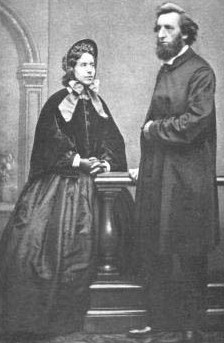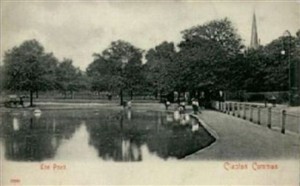The Booths in Hackney

William and Catherine Booth moved to Hackney in 1865, the year that they founded the Salvation Army
© Salvation Army International, USA

Clapton Common, with its grazing cows and dogs swimming in the pond, was outside the Booth's front door
© unknown
By Natasha Lewer
A test ground
Hackney played an integral part in the development of the Salvation Army. After its beginnings in Whitechapel, the focus of General William Booth – the Army’s founder - moved northwards. Hackney – then as now - was an area of contrasts. While leafy Upper Clapton had an almost rural atmosphere, and was where the Booths eventually chose to live, other areas were desperately deprived. Recognising how many of its inhabitants were so obviously in need, William Booth chose Hackney as a test ground for the Salvation Army’s emerging spiritual and social mission.
The Booths at home
William and Catherine Booth moved to Hackney in 1865, living first in Cambridge Lodge Villas (where St Joseph’s Hospice is now), and moving three years later to 3 Gore Road, a house whose large garden was filled with their children’s menagerie of rats, mice, guinea-pigs and silkworms, as well as their cats and dogs. In 1880 they moved north to 114 Clapton Common, and then finally to Rookwood Road, Upper Clapton, in 1885. The houses on Clapton Common, wrote William Booth, “look on to the Common, and the tram-cars passing in the distance, the children at play, the cows grazing, dogs swimming about the pond, all together make the look-out quite lively.”
William and Catherine’s son, Bramwell - who took over the leadership of the Salvation Army on his father’s death - and his wife, Florence Soper Booth - who was the driving force behind the Women’s Social Work branch of the Salvation Army – also lived in Upper Clapton in the 1880s, in nearby Castlewood Road.